|
|
- Wright Studies
- Frank L. Smith Bank, Dwight, Illinois (1905
- S.111)
|
| |
|
Exterior
Photographs By Douglas Steiner,
February
2009 |
|
On a recent trip from Chicago to
Seattle with my daughter and grandchildren, we had a few
minutes to stop and see the Frank L. Smith Bank, now the
First National Bank in Dwight, Illinois. It is just a few
minutes off the interstate and is the only bank Wright
designed that is still functioning as a bank. Wright’s original 1904 design for the
exterior of the bank was more elaborate and in Wright’s
style than the final 1905 design. But the final design is
very close to the 1901 project for “A Small Village Bank”,
published in the Brickbuilder 1901 and in
Ausgeführte
Bauten und Entwürfe |
|
von Frank Lloyd Wright 1910,
Tafel
XII a & b. And yet even in this simple design, there are
consistent Wright elements. He incorporate horizontal bands
of windows, and vertical columns on either end. Most of all
his ability to work with the building’s visual perspective.
When you first view the bank from a distance it appears to
be a single story. But as you approach the building and the
entrance becomes apparent, the building grows in size. It is
reminiscent of what Wright accomplishes with hallways
opening up to larger spaces. |
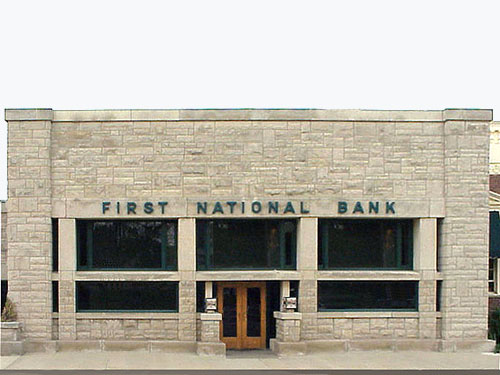 |
|
1:
Viewed from the Southeast, this
original section of the Bank still appears as Wright
designed it. The clock that appeared at the top of the
building in earlier images was removed during the early 1990
remodeling. Originally the front doors were located at
the back end of the Logia which is consistent with how Wright
would hide the entrance. |
|
|
|
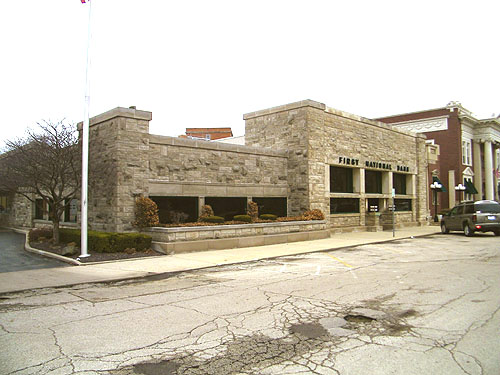 |
|
2:
Viewed from the South, the
addition on the left was added in the early 1990. The
original section of the Bank on the right still appears as
Wright designed it. The clock that appeared at the top of
the building in earlier images was removed. |
|
|
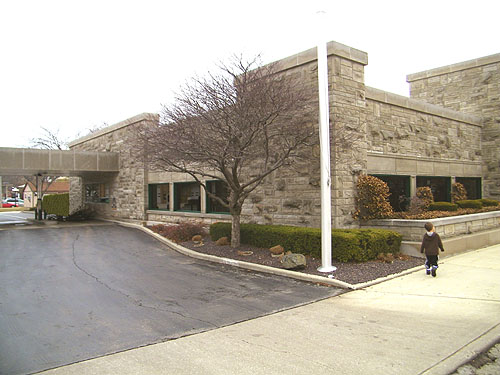 |
|
3:
Viewed from the South, the
addition on the left was added in the early 1990. The
additional retained Wright's theme. There is a drive through
on the far left. My four year old grandson admires
Wright's intricate design elements. |
|
|
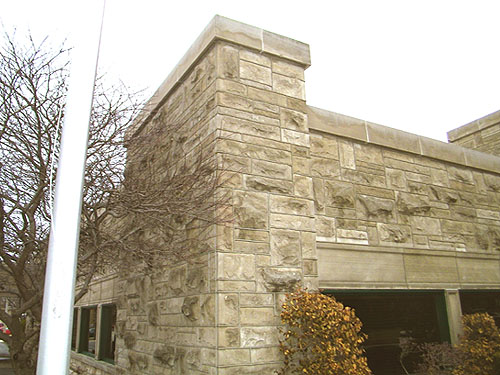 |
|
4:
Viewed from the South. A
vertical column that appears on either end of the original
structure, is repeated and takes a prominent role in the
addition. |
|
|
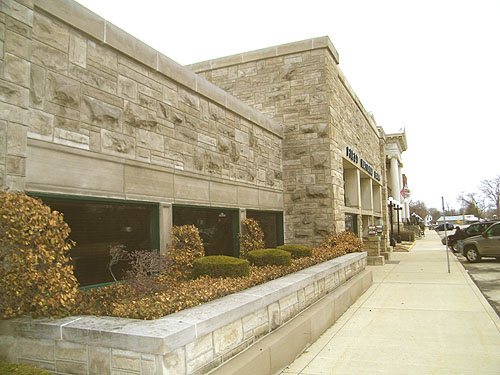 |
|
5:
Viewed from the South. The
addition retains the character and material of the original
design. |
|
|
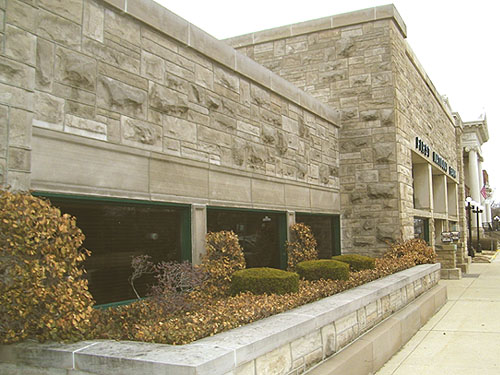 |
|
6:
Viewed from the South. The
addition retains the character and material of the original
design. |
|
|
|
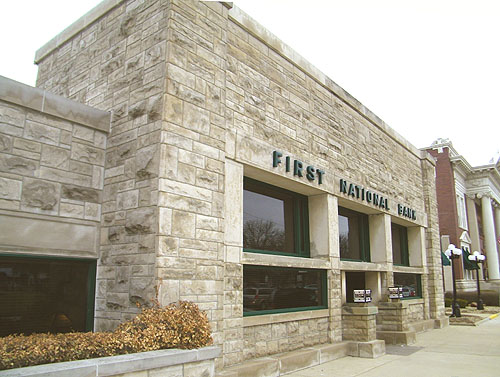 |
|
7:
Viewed from the South. When
you first view the bank from a distance it appears to be a
single story. But as you approach the building and the
entrance becomes apparent, the building grows in size. |
|
|
|
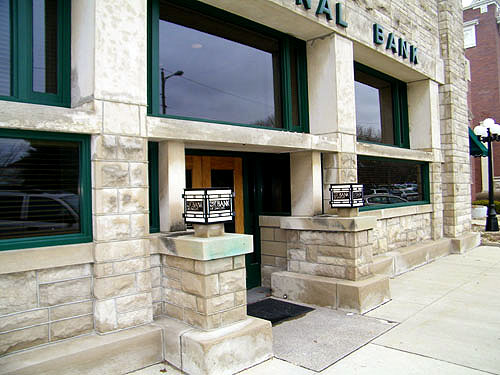 |
|
8:
Viewed from the South. As you
approach the bank and the entrance becomes apparent, the
building grows in size. |
|
|
|
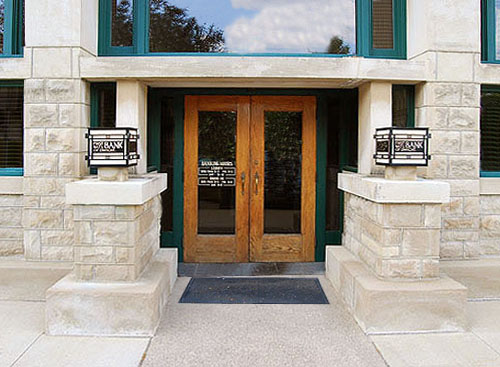 |
|
9:
Viewed from the Southeast.
Originally the front doors were located at the back end of the Logia which is consistent with how Wright
would hide the entrance. The entrance pedestals center on
the column behind it. This is very consistent with how
Wright diminished the size of his hallways. As you moved
through the narrow hallways, the space you moved into gave
the feeling of a much larger space. |
|
|
|
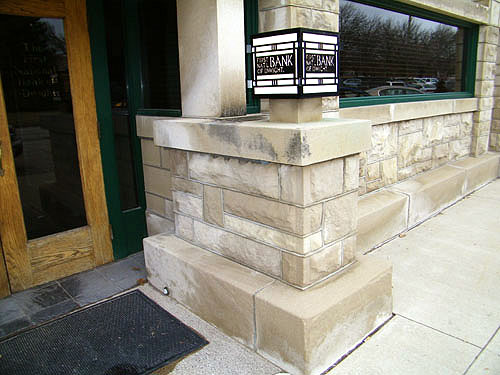 |
|
10:
Viewed from the South.
Originally the front doors were located at the back end of the Logia which is consistent with how Wright
would hide the entrance. The entrance pedestals center on
the column behind it. This is very consistent with how
Wright diminished the size of his hallways. As you moved
through the narrow hallways, the space you moved into gave
the feeling of a much larger space. |
|
|
|
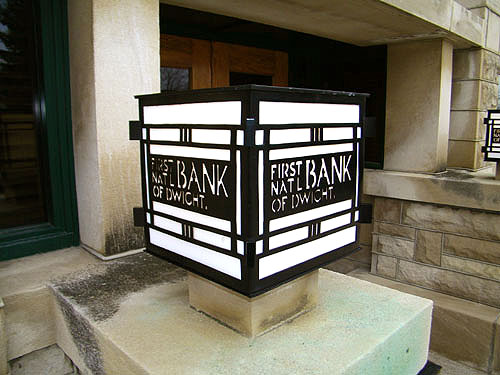 |
|
11:
Viewed from the South. Detail of the
lantern atop the entrance pedestals. |
|
|
|
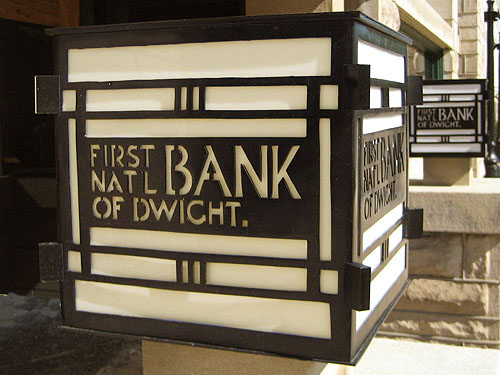 |
|
12:
Detail of the lantern
atop the entrance pedestals.
(This image courtesy of IvoShandor, Wickimedia, and has been altered.) |
|
|
|
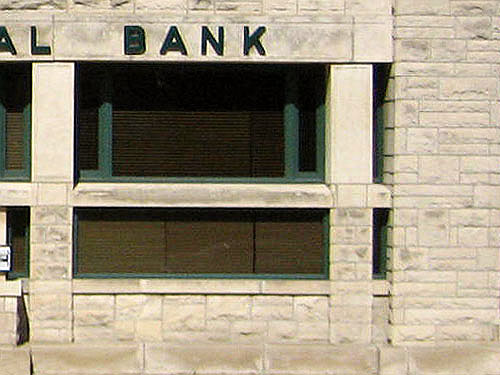 |
|
13:
Detail of the narrow window
on the right between the last two columns. Wright
extended the horizontal row of windows from the corner
column on the left to the corner column on the right. |
|
|
|
|
|
|
|
Text and Photographs by Douglas M. Steiner, Copyright
2009 |
|
|
|
|
|
|
|
|

CLICK TO ORDER












